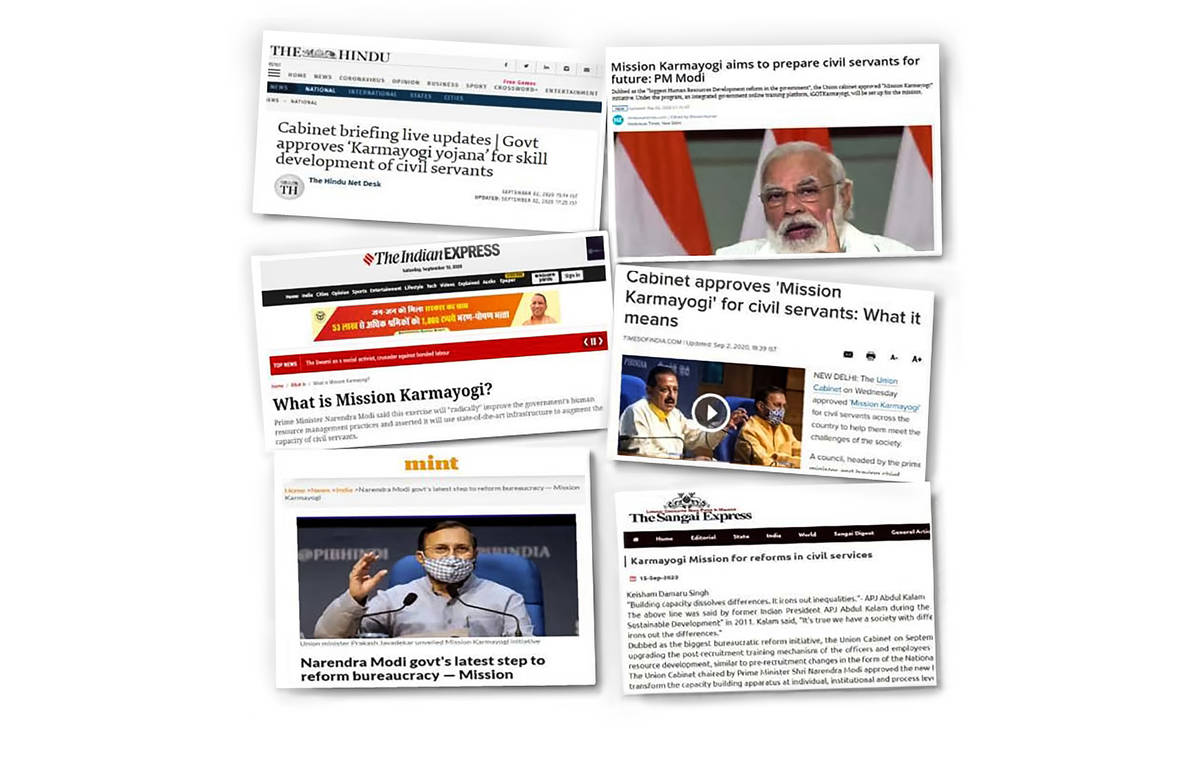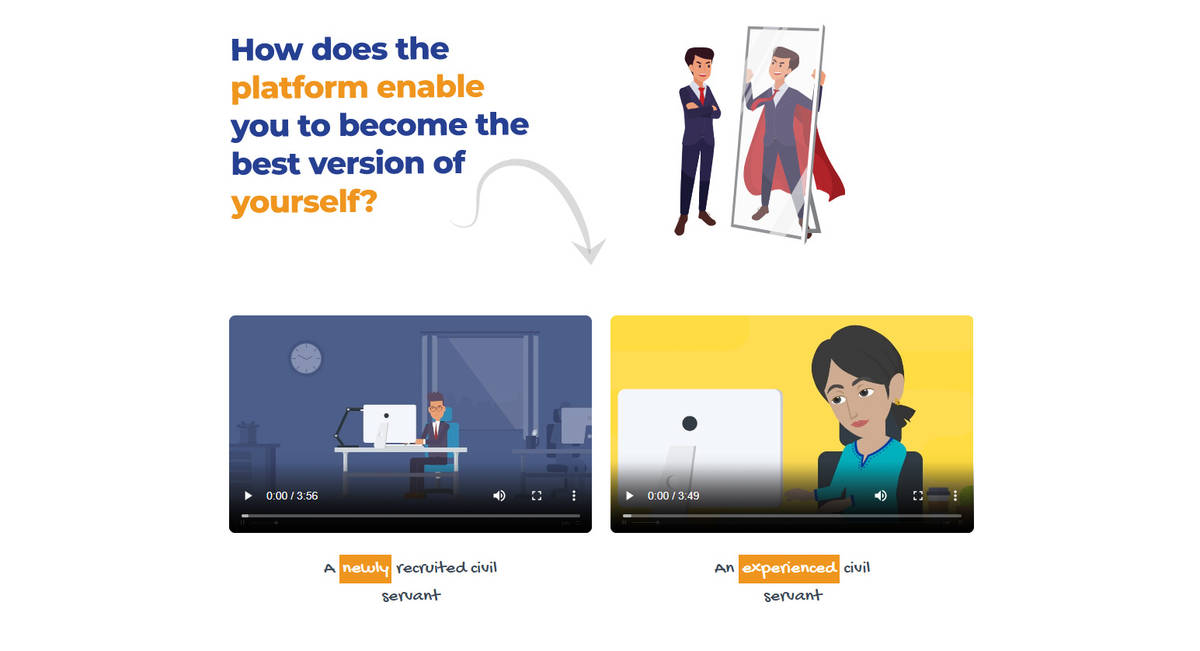Communicating with Clarity: A Robust IEC Strategy for Mission Karmayogi
INTRODUCTION
IEC, or Information, Education, and Communication is an approach that attempts to change or reinforce a set of behaviours in a "target audience" regarding a specific problem over a set period of time. IEC strategies apply to a range of development issues to spread awareness and effect desired positive and sustainable change in the behaviour of individuals, groups, communities, and ultimately, societies.
Over the years, IEC interventions have been effectively deployed by several organisations including UNICEF and WHO to address a range of development issues with a far-reaching and sustainable impact.
Closer to home, several citizen-facing and flagship missions of the Government of India have put IEC at the front and centre of its implementation approach. While the crucial role of the IEC in effective COVID management is today well known, other programs such as Swachh Bharat Mission, or Beti Bachao Beti Padhao have focused on IEC to ensure not just awareness but also secure active participation and sustained engagement of its target groups to effect visible change on the ground.

Effective IEC interventions must be contextualised and designed within the context of the programmatic goals and objectives. The following are the critical steps in developing an IEC strategy:
- Planning: This is the most crucial step in the IEC intervention which includes situational analysis, conducting appropriate research identifying the target audience and defining the objectives and outcomes of the intervention in measurable terms.
- Preparatory activities and collateral development: This stage includes the identification of partners and trained facilitators (for carrying out on-the-ground interventions, conducting necessary training, developing key messages, zeroing in on appropriate media and channels of communication, designing outreach materials and pre-testing them with a sample population before its actual roll-out.
- Dissemination and utilisation: Well-designed IEC materials serve no purpose unless it reaches their target audience in the most cost-effective way possible. It is, therefore, crucial to have a dissemination strategy in place at the beginning of the IEC intervention. Moreover, in order to ensure optimum and appropriate usage, all outreach materials must necessarily be accompanied by usage guidelines.
- Monitoring and evaluation: Monitoring involves the ongoing collection and analysis of information in order to determine whether IEC activities are being carried out as per plan, identify roadblocks, provide feedback, and course-correct, wherever necessary. Evaluation, on the other hand, is usually conducted either in the middle or at the end of the program to understand the impact of the intervention.
MISSION KARMAYOGI
Mission Karmayogi (MK), or the National Programme for Civil Services Capacity Building (NPCSCB) is a reform of the Indian bureaucracy which seeks to create a professional, well-trained and future-looking civil service, that is imbued with a shared understanding of India’s developmental aspirations, national programs and priorities.
The programme envisions a transition in the mindset of government officials from Karmacharis to Karmayogis, as well as a transition in the capacity-building efforts from rule-based to role-based, to pave the way for a public Human Resource Management System. A well-planned and executed IEC strategy can help in accomplishing this.
The goal of the IEC strategy for Mission Karmayogi is to build enthusiasm around the targeted learning of public officials and drive the usage of the iGOT Karmayogi platform. The objective is also to encourage a gradual shift towards consistent and life-long capacity building among public officials and disseminate information regarding the immediate benefits and long-term impact of the program.
KEY STAKEHOLDERS FOR IEC STRATEGY FOR MK
As mentioned earlier, the key to the success of an IEC intervention lies in identifying the target audience. In the case of MK, the target audience for MK can be divided into three categories:
- Government officials: The 20 million government officials are the largest and primary stakeholders of the initiative. IEC strategy aims to propagate tailored messages highlighting the key benefits of the mission to pique interest and engage with officials.
- Competency Building Product (CBP) providers: The CBPs are being sourced from various organisations including central and state training institutes, special programmes, learning portals, learning resources sharing portals, individuals, university partners, behavioural competency-related courses, MOOC platforms, and the Vidyaadan programme for iGOT Karmayogi.
- Human Resource Managers (HRMs) within Ministries, departments, and organisations (MDOs). An effective IEC strategy aims to aid HRMs to connect the right people with the right job with the power of effective messaging.
PLANNING & PHASE-WISE ROLL OUT
For IEC interventions to succeed, it is crucial that the strategy is rolled out in a three-phased manner listed below.
Some suggested messages in each phase are presented below:
|
Phase 1 |
Phase 2 |
Phase 3 |
|
|
|
COMMUNICATION CHANNELS AND MEDIUMS
In order to optimally reach and engage the targeted stakeholders, it is be prudent to apply a mix of traditional and digital outreach channels and tools. In 2019, Talwalker, an online monitoring service providing real-time insights on all social channels, conducted a survey revealing the vast digital landscape in India. They found that nearly 330 million Indians are on social media and WhatsApp. Combining social media with targeted messaging through tools like videos, posters, infographics and emailers, can go a long way in building awareness for iGOT Karmayogi, the e-learning platform designed for providing necessary digital infrastructure to upload courses and conduct online training in order to build the capacities of government officials.
KEY MEDIA AND CHANNELS OF COMMUNICATION
-
A dedicated website- Karmayogi Bharat
-
Print and digital posters with a clear call to action

-
Media and Press to enhance awareness around the programmme

-
Writing Opeds to promote Mission Karmayogi among the masses
-
Explainer videos detailing the journey of public officials onto iGOT Karmayogi platform.

-
Podcasts/ interviews by subject matter experts and stakeholders detailing the importance of the civil services capacity-building programme.
-
Instructional videos on courses
-
Social Media such as LinkedIn, Twitter
-
Digital competitions/ events
BRANDING FOR MISSION KARMAYOGI
Logos and branding cultivate trust, inspire recognition, help create an identity and promote recall. Therefore, The brand identity created for Mission Karmayogi, through its logo and design aims to reflect the features and values it stands for – nation-building, a model of promoting lifelong learning and growth, and blended learning elements where a Kalam (pen) meets with a desktop mouse.

MONITORING & EVALUATION
Monitoring and evaluation are important to ensure that all communications are strategic, and lead to the envisioned outcome. In the case of Mission Karmayogi, communication activities can be monitored using various metrics and platforms like Google Analytics, and Hootsuite could be used to measure the engagement of social media and website traffic.
SUMMING UP
A well-thought-out and effectively implemented IEC strategy would certainly contribute to the success of Mission Karmayogi. C-LOP, a knowledge partner of the Department of Personnel and Training (DoPT) and Capacity Building Commission (CBC) has envisaged an IEC strategy for the smooth uptake and implementation of Mission Karmayogi. C-LOP has also contributed towards suggesting branding inputs for the initiative and other communication collaterals for enhancing awareness around the mammoth Indian bureaucracy reform.




Add new comment